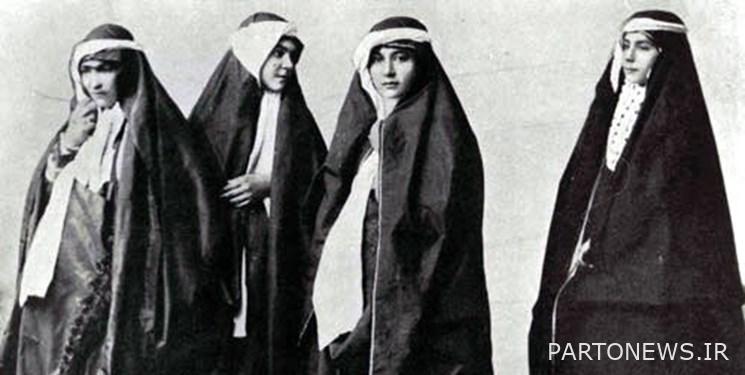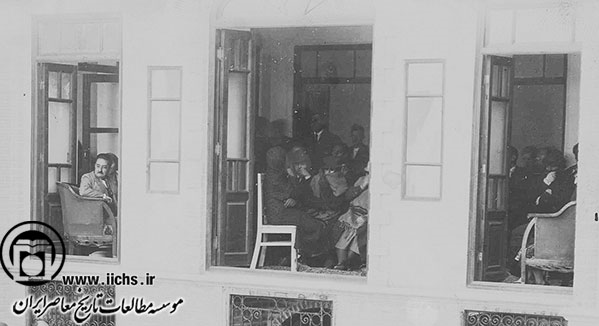Rezakhani’s achievement of confining women in the back of houses / “Discovering the hijab” and de-securing the family

Family group: During the reign of Reza Shah Pahlavi in Iran, in order to reform himself and instill Western culture and de-religionization of Iranian society, he discovered the hijab of Iranian women. The beginning of this quasi-modernist act was on the 17th of December 1314, which had many negative consequences for the Iranian society, and the people of different cities showed their opposition to the government many times and in different models due to the conflict between this law and the religious and Iranian religion and tradition. These had no consequences other than beatings and harassment.
The law on the discovery of the hijab endangered the security of the Iranian family. It was torn apart by profanity and violence.
In the memoirs of Ayatollah Seyyed Ali Akbar Ghorashi, it is stated: , occurred. Of course, this action is opposed by great scholars in Azerbaijan, Khorasan, Isfahan, Qom, Tehran, etc., and even the bloody uprising of the Muslim people in Goharshad Mosque led by religious scholars is known in the history of Iran and is known to everyone, and I do not see the need here. To address it. But even though I was an eight-year-old child, I saw an incident in Bonab that I will always remember and quote here.
In Bonab, women wore high turbans that covered half of their bodies. Of course, the religion of the people was also strong; So the government did not take it too hard. However, Reza Khan’s verdict was such that the constables could not disregard it. Sometimes, if they saw a woman alone in the street, they would try to pull a scarf off her head, and in some cases, they would even beat chaste women who resisted and did not throw off their scarves and shawls.
One day I saw with my own eyes that a woman was walking in the alley with a long beard, a low-ranking policeman saw her and attacked her to take the beard off her head! But that Bahia woman was smart and skinny and soon realized, she immediately ran, entered the house and closed the door tightly behind her! The lowly policeman, who did not reach him, said repeatedly and in a loud voice: “It is a pity that my hand did not reach you, it is a pity! Otherwise … ».
Hijab discovery ceremony in Kerman with the presence of a group of women officials and local people in the early Pahlavi period
Reza Khan, claiming that it would bring more freedom and rights to women, took away their right to choose by force and from the very beginning, he fell in love with the values of Iranian society, so that he de-secured the institution of the family and threatened it.
At the beginning of the implementation of this policy, in order to increase the insult and worsen the situation of women in chadors, he stated that evil women should not have the right to be unveiled except in the spring when they can get married. In fact, he tried to turn the symbol of chastity into a symbol of immorality. Witnessing this incident was waiting for the articles published by Shahrbani magazine in this field and presenting the crime statistics of the chadors. This was a direct attack on the original values of the family and society.
One of the achievements of this law was the departure of many Iranians from the borders and migration, especially the nomads who took the road to Afghanistan and Iraq and migrated. So, what Reza Khan was talking about was the achievement of women’s rights, creating the ground for their confinement in the slums of houses, because it endangered and destroyed the bed of social activity and their security. Police officers did not spare anything from removing the burqa and headscarf from the veiled robbers and insulting them. Many of these women belonged to religious families, so they did not leave their homes because they could not wear the hijab.
The work had reached a point where the security of women had been destroyed to such an extent that, for example, in the city of Khoy, at one of the celebrations for the discovery of the hijab, Colonel Zaltash asked two famous women to sit next to him, but the women did not like him. They did not listen. The two women were the wives of two governments. Again, they ignored the colonel.
The government installed cameras everywhere to enforce the hijab law, and local authorities ordered the arrest and punishment of protesting clerics in particular, barring women wearing hijabs from entering shops, cinemas and baths, riding in carriages, cars and treatment. Be in clinics. Sources even say that secret agents stood at the entrances of the bathrooms to monitor the implementation of this law. Where is this and where are the political rights of women?

Celebration of the Ministry of Education in Qom, after the discovery of the hijab (1314)
The first reaction of the clergy to the removal of the veil from Shiraz began during a celebration that was held in the presence of Ali Asghar Hekmat, Minister of Education at the Shahpour School in Shiraz. “Some of the young girls appeared on the stage and immediately took off their burqas and started dancing with their faces open and their hair visible.” He stood up and gave a speech against the Shah’s regime. Following this speech, he was arrested and imprisoned, and after that, the Goharshad mosque incident took place.
The Women’s Association at that time was one of the centers that encouraged the discovery of hijab, and the seed of this law was sown between these women and Reza Khan. Scout girls led by Shams Pahlavi worked to change the indigenous culture of Iranian women. In addition to banning tents and veils, changing the style of traditional men’s clothing, wearing short skirts, skinny pants, and makeup, as well as women entering factory jobs, challenged the Iranian family.
Even after a while, celebrations were held in the country to commemorate the lack of hijab and it was published in the press. These celebrations all spoke of reform, but in fact it was written about them: “The common sight of many celebrations was men and women sitting opposite each other in the rooms, and women shyly covered their faces with their hands or with the collars of their coats.”
Another manifestation of this hijab discovery was the actions taken to de-secure the symbolic realm of society, such as aggressive behaviors and the confinement of women in their homes and intimidation, all of which caused insecurity and hatred of the government. Women tried not to go out and do not leave their homes except when necessary, and religious families even bathed in their homes so that women would not have to leave the house as much.
Historical documents show that in the six years between the discovery of the hijab and September 1931, most people and religious people tried to circumvent this law despite psychological pressures. For example, men kept their wives’ hijabs by bribing agents, and sometimes even got into fights with agents. Many were martyred in the protests. Sometimes the violent behavior of government officials caused the residents of a neighborhood to face an officer, beat him and run away.
Eventually, the law on changing clothes and the policy of uncovering the hijab were Reza Khan’s two plans in line with the situation he had adopted for development and progress, but what happened was a superficial, superficial change and repression of the people, a policy that met with only a negative reaction from the majority of society. .
End of message /
You can edit this post
Suggest this for the front page
.

